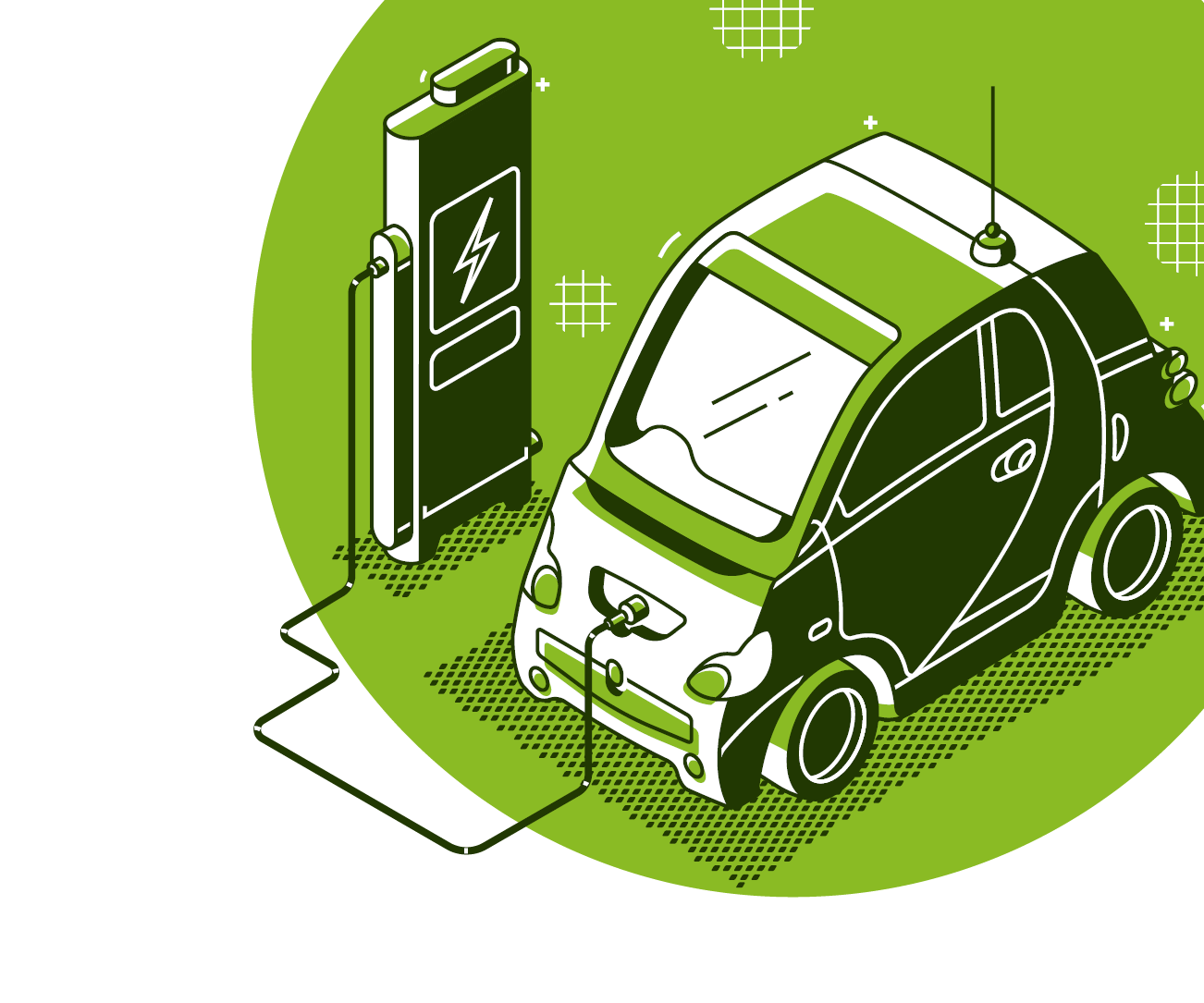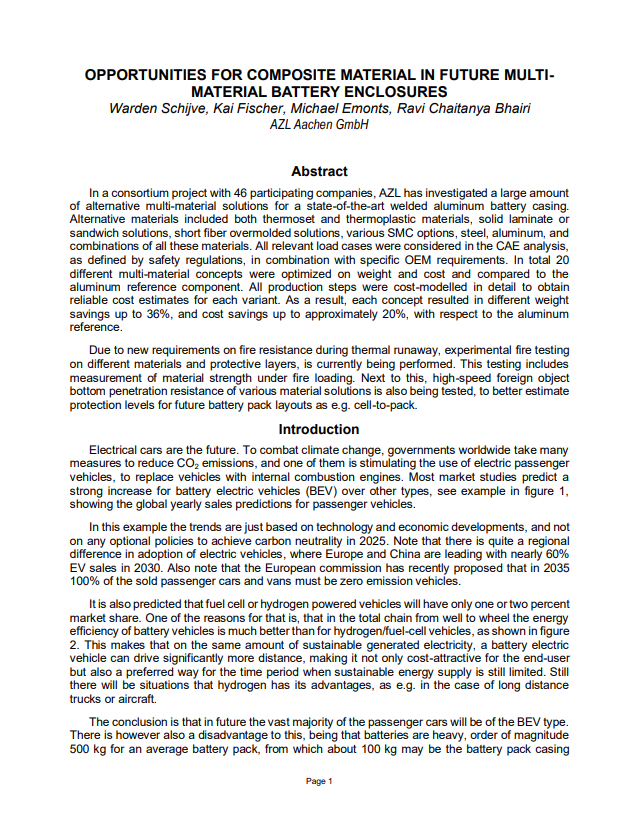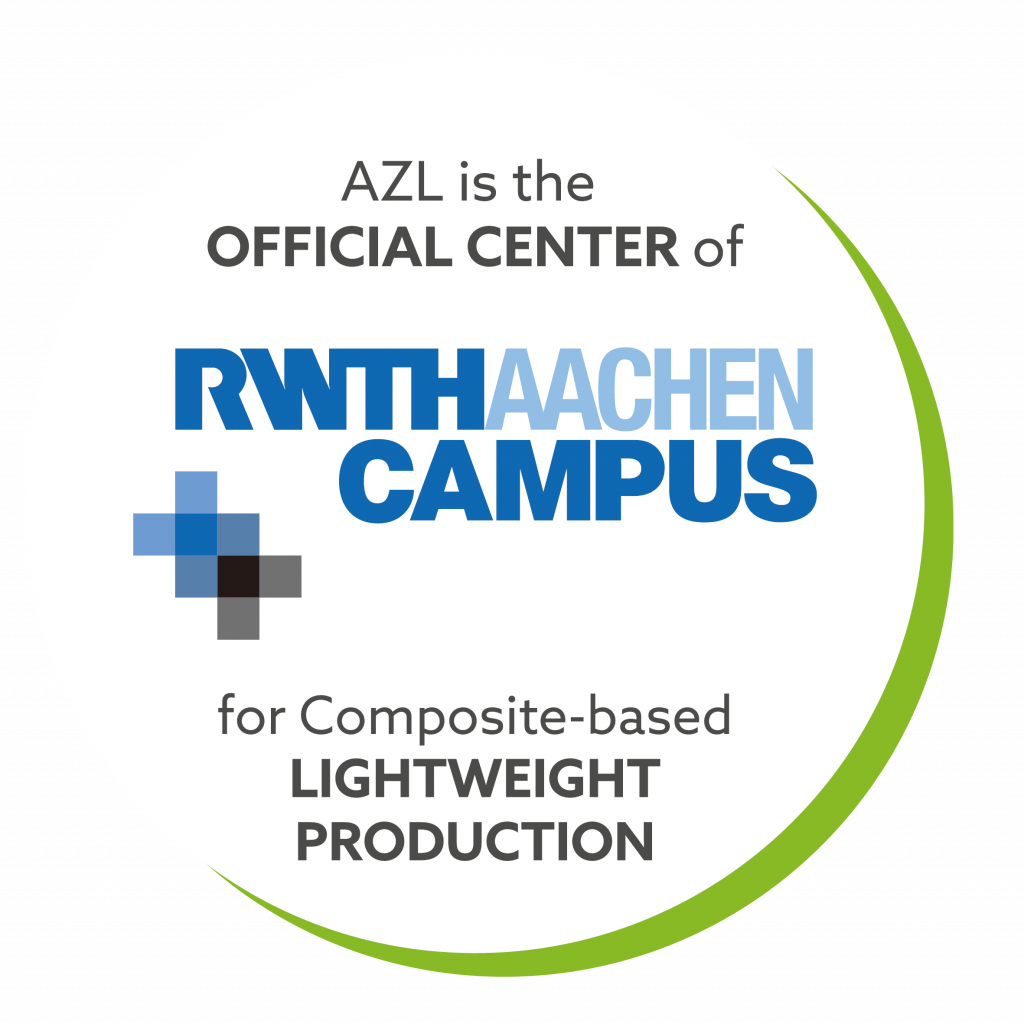Battery Casing Products and Services
With our market and technology know-how, simulation methods, cost and CO2 footprint analysis and testing capacities, we provide consulting and development for your materials, products and technologies.
Download the flyer on Battery Casing Products and Services
Concept Study & Development of Cell-to-Pack Battery Casings
AZL Joint Partner Project
Final Report available for purchase
- 35 participating companies including Audi, Jaguar Land Rover and Toyota
- Objective: reveal the potential for multi-material combinations of the battery casing of the future
Work Packages:
- Screening of market and technology developments
- Update of existing reference specification sheet
- Sketch design & dimensioning of multiple alternative concepts
- CAD visualization
- Process chain & business case analysis including CO2 analsysis (cradle-to-gate)

Application Relevant Fire Test Procedure for Battery Pack Protection
AZL Engineering Service
Material Strength Test
- 3 different temperatures: 800°C, 1000°C, 1200°C
- During exposure to fire: tensile force of 0.5 kN over 10 minutes
- If no failure, increase force up to 5 kN
Particle Blast Test
- Equal damage effect of thermal runaway with real battery cell
- Exposure to 1200°C for 80 seconds
- Afterwards 10 seconds blast duration, filling mass 450 g
Test specimen size for both tests is 200 mm x 100 mm, flame exposure along the full specimen width Approx. 10 test specimens required, 2 for each tests and temperature
AZL’s Expertise
AZL Joint Partner Project completed in 2022:
Fire Protection – Application Relevant Fire Test Procedure for Composites
- Consortium of 24 industrial partners along the complete value chain
- Setup of test procedure and test bench with 3 different temperatures measuring the material strength under fire load
- 50+ materials tested and compared
- Impact on performance, weight and cost
To learn more about fire safety for electric vehicles, watch the Clariant & AZL webinar on SpecialChem: The Material Selection Platform:
“Safeguarding Electric Vehicles: Fire safety solutions for HV connectors and battery enclosures”
Fill out the form below to get free access.
Application Relevant Bottom Impact Protection for Battery Casing
AZL Engineering Service
- Simulates oblique angle impact occurring in high-speed driving over hard objects
- 3 different angles for impact possible: 90°, 45° and 25°
- 15 mm dart impactor, max. height 4 m, max. mass 60 kg
- Large-scale tests and small-scale tests (only 90°)
Test specimen size for large-scale 400 mm x 400 mm, small-scale 120 mm x 120 mm. Approx. 2 specimens for each angle in large-scale test, 10 specimens for small-scale test.
AZL’s Expertise
AZL Joint Partner Project completed in 2022:
Application-relevant test method and investigation of the relative safety performance of different material options for bottom impact protection battery casings
- Consortium of 13 industrial partners along the complete value chain
- Improvement of an existing test bench* for 25° oblique impact and setup of test procedure
- 20+ materials tested and compared
- Impact on performance, weight and cost
*Original test bench developed by Thyssenkrupp
EV Battery Casings Consultancy
AZL Engineering Service
Together we analyse the fast-growing market for EV battery casings and identify opportunities for your materials, products and technologies considerung cost, weight and environmental impact
Our Assets related to Battery Casings
AZL conducted several consortium projects with 76 industrial companies along the complete value chain, investigating:
- Worldwide standards, regulations and specifications
- 60+ state of the art casings and future concepts
- About 30 different multi-material design concepts, including future cell-to-pack designs
- CEA analysis and optimisation to crash and intrsuion load cases
- Modelling production chains and benchmarking analysis of weight, cost and CO2 footprint, and volumentric efficiency
- Experimental testing of high speed oblique foreign object impact protection, more than 25 different materials
- CAE design relevant fire safety testing, more than 50 different materials and protection layers
Quick Links
Contact Details
- +49 241 475735 0
- +49 241 475735 18
- info@azl-aachen-gmbh.de
-
Campus Boulevard 30
Building Part 3B, 4th Floor
52074 Aachen, Germany
© 2024 AZL Aachen GmbH. All Rights Reserved.



